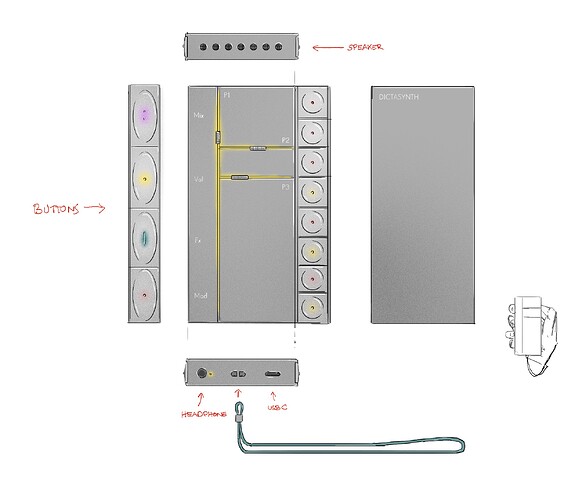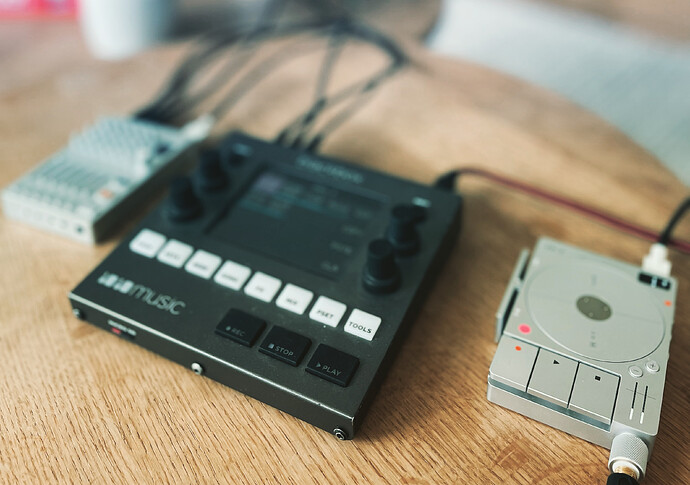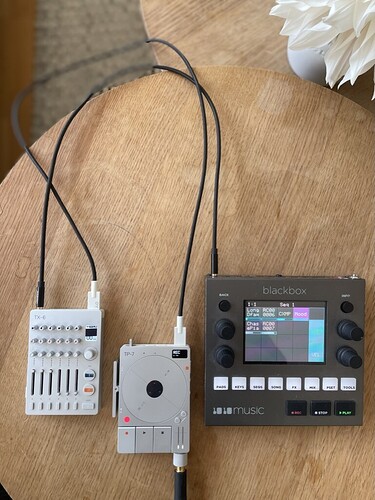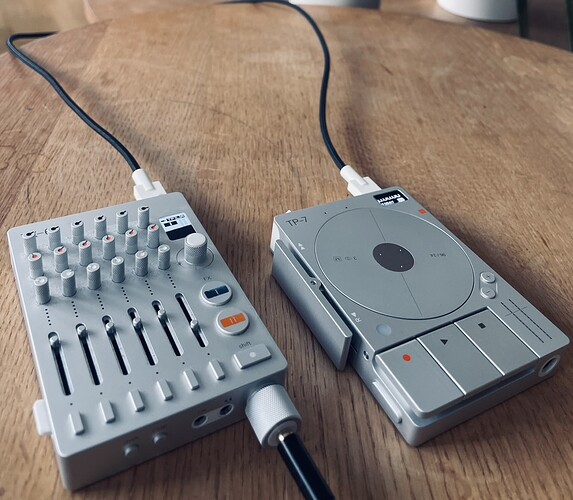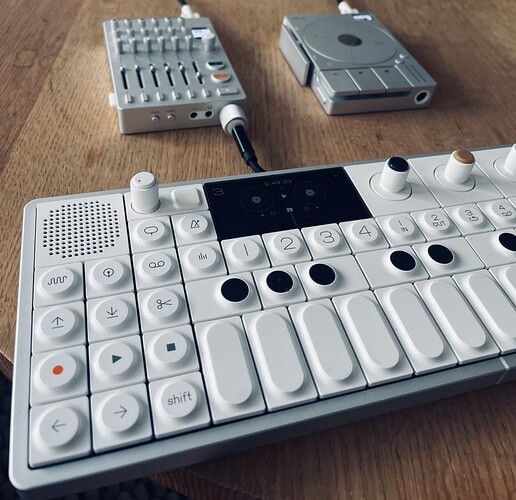And here we are -
So this time, I used the TP-7 as the main tool for composition as well. Not sure that’s a great way to go about it, but it’s certainly commitment to the process. If you think the OP-1 Field is tough on the lack of undos and stuff, the TP-7 is just brutal to use like this.
So I recorded a few sequences from the OP-1 Field into the 1010 blackbox first, and added some of those sweet granular effects, that lovely 1010 filtering and pitch algorithm, which just seems to apply a vintage tape effect all by its own. Essentially, some rough track design.
Once I had it all in the blackbox, the OP-1 being the primary sampled source, I experimented some with the song structure in the blackbox, triggering loops and clips to get some idea of what I wanted the track to be like.
Finally, I did some field recordings with the TP-7 as well, and then I put it all on the six stereo tracks on the TP-7, recording from the blackbox and nature itself.
The improvisations and experimentation from the blackbox guided me through the recording onto the TP-7, which became the real composition process. I layered each track, one by one. Listened by ear to get some idea where I’d put the next one, recorded that one where I figured it should start, and kept doing this for all tracks minus the nature stuff through the microphone, which I just had running from start to finish. The only way I could change anything, was to re-record one take entirely. Which I did a few times.
After that, all six TP-7 tracks went through the TX-6. Some eq, the TX-6 reverb on two channels, panning and slight filtering, but no compression. The result was recorded onto the OP-1 Vintage Reel, some minor Mother reverb added to the master, no Drive or Release.
